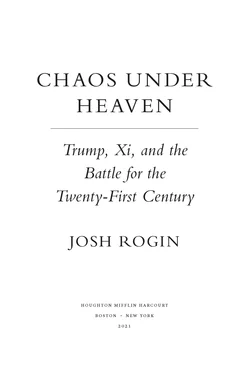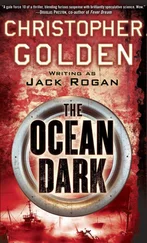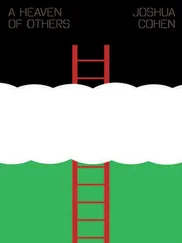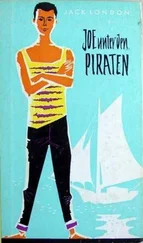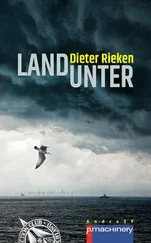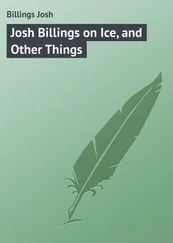But Trump wasn’t content to simply claim he had fixed the US-China economic relationship. He then went on to claim, quite absurdly, that he had solved several other huge problems in the US-China relationship. He claimed that China was helping the United States with North Korea (although Beijing was in fact loosening sanctions and pressure on the rogue regime). He said Xi had made great progress on stopping fentanyl from coming into the United States, despite the fact that there was zero evidence of that.
Not everyone was in such a celebratory mood. The fear among the hardliners was that after the signing, Trump would refuse to allow any more tough-on-China actions, in order to protect his new baby. They were mortified as they watched him present the Phase One trade deal—which they considered only moderately consequential—as a broader détente in the US-China relationship. For them, it was simply a limited agreement for a short-term truce on one front of the wider war with China.
Their boss, clearly, did not see it this way. “This is something that—far beyond even this deal—it’s going to lead to an even stronger world peace,” Trump said. “We now have a big investment in each other and in getting along with each other.” He added that it was important for the whole world to keep “these two giant and powerful nations together in harmony.” This kind of language reminded the hardliners of the “new model of great power relations” Xi had originally pitched to Obama. Trump seemed to be nodding to it.
That was January 15, 2020. The Chinese officials flew home satisfied that they had cemented a new path forward for US-China relations. Throughout their entire visit, they never once mentioned the issue that would soon dominate not only the relationship but the attention of the entire world—a mysterious flu was already spreading throughout China.
“They just got on the plane and never said a word,” a White House official said. “Almost the next day, information about the virus started pouring in.”
14
The Coronavirus
The first National Security Council (NSC) meeting on the strange new flu spreading around China had been held on the 14th of January, just one day before the White House ceremony to sign the Phase One trade deal. The meeting was held at the Policy Coordination Committee level, meaning the issue was not deemed important enough yet for cabinet officials, so each department was represented by lower-level officials. NSC senior director for weapons of mass destruction and biodefense Anthony Ruggiero chaired the meeting. Matt Pottinger was traveling abroad. “At that point, we didn’t know how bad it was,” Pottinger later recalled. They wouldn’t have long to wait.
There in the room were representatives from all the related agencies, including the Centers for Disease Control and Prevention (CDC). The objective of this meeting was simply to try to get the lay of the land—and get answers to some basic questions. What do we know about this thing? Do we have eyes on the ground? Where is the best information coming from? What are the Chinese saying about it? But all that came back were shrugs. The health officials said that information was scarce. The US government had been trying to get permission to send CDC personnel to Wuhan for over a week without success. The World Health Organization (WHO) had been issuing statements about virus outbreak, but they hadn’t been allowed to visit Wuhan yet either, so they didn’t have any firsthand information.
Throughout all the festivities the next day at the White House surrounding the Phase One trade deal signing ceremony, the Chinese delegation acted as if there was no health crisis in their country that was in the process of spreading around the world; during their visit, the Chinese representatives didn’t say a word about the virus. Nothing. It was never brought up—by either side.
It didn’t even occur to the US officials who were hosting the Chinese delegation to ask about the coronavirus. The Chinese officials left after a two-day visit marked by the trade deal signing and press conference, giving no warning about what they must have known at the time: that the emerging pandemic was much worse than publicly known—more contagious, more present in asymptomatic cases, and more out of control than they wanted to admit.
Over the next ten days, Pottinger’s email inbox was flooded with messages from credible sources telling him the outbreak in China was far worse than the Chinese government was telling. He began to scour Chinese social media, picking up firsthand accounts of the outbreak in Wuhan as they appeared and then were quickly deleted by Chinese censors. Ai Fen, a senior doctor at Wuhan Central Hospital, posted about the virus on WeChat. Wuhan doctor Li Wenliang also shared information. Both were admonished by the Chinese authorities for releasing information not previously approved by the government. The cover-up was already under way. Any Chinese health officials who publicly warned that the virus was more dangerous than the authorities would admit were forced to apologize or arrested.
On the evening of January 24, Pottinger went to Dimon Liu’s house for a Chinese New Year’s dinner celebration. It wasn’t a formal Bingo Club event, but it was the same crowd. (I was out of town that weekend and missed it.) The Chinese dissidents at the party pleaded with Pottinger to investigate further, insisting that the crisis in Wuhan was far worse than advertised.
Pottinger came home from the party rattled and immediately started reaching out to doctors inside China who had been his sources when he covered the SARS outbreak in 2003 as a reporter for the Wall Street Journal. That public health crisis had marked the global debut of—and the first known pandemic risk from—coronaviruses, a type of pathogen that until then had been little studied and only poorly understood.
The deputy national security adviser was shocked, but not surprised, to think that history could now be repeating itself. The 2003 outbreak of what became known as severe acute respiratory syndrome coronavirus (SARS-CoV) had originated in China’s Guangdong Province, where it was thought to have spread from bats to a type of tree-dwelling mammal called a palm civet, and from there to humans. The outbreak had ultimately been contained, but not before infecting over eight thousand people in over two dozen countries and causing 774 deaths. The Chinese government had actively undermined the containment efforts by failing to alert the WHO in a timely manner, suppressing information about the outbreak and allowing it to spread around the world without proper warnings.
Pottinger’s response was not informed solely by his personal experience with SARS. It just so happened that he had two other close contacts who could provide him with information and insights on the subject of the new outbreak. Yen Pottinger, Matt’s wife, is a trained virologist and former CDC official. Paul Pottinger, Matt’s brother, is a professor of infectious diseases at the University of Washington School of Medicine in Seattle.
Between his ability to read Chinese social media in Chinese, his sources inside China, and his family expertise with infectious diseases—not to mention the US intelligence trickling in—Pottinger found himself at the nexus of more streams of information about the coronavirus than anyone else in the US government. He saw the pandemic coming before anyone else. But he had a problem: most people in the Trump administration didn’t wanted to believe what was unfolding—or at least didn’t want to speak up.
“Holy . . .”
On Monday, January 27, with Robert O’Brien’s blessing, Pottinger called a cabinet meeting and chaired it, with the number one or two officials from all the relevant agencies in attendance: Health and Human Services Department secretary Alex Azar, CDC director Robert Redfield, Deputy Secretary of State Stephen Biegun, and National Institute of Allergy and Infectious Diseases director Anthony Fauci were all there. Pottinger told them all about his experience covering the SARS epidemic in China in 2003, the cover-up, the lack of real information coming out of China, and how we were seeing those exact patterns again.
Читать дальше
